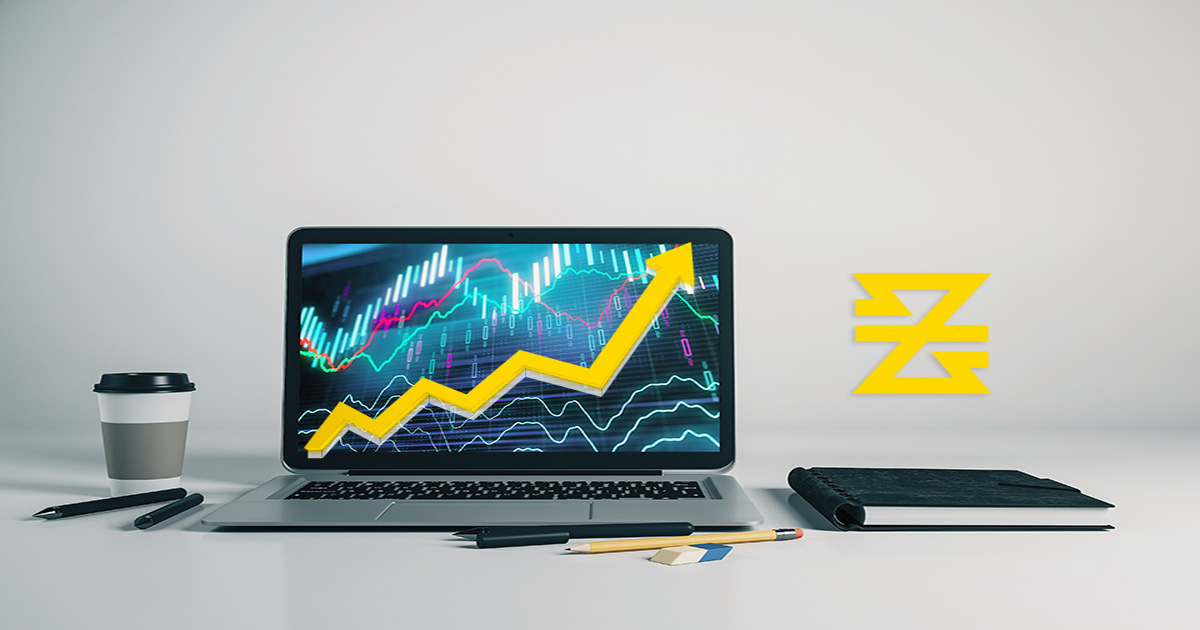What Does Trade Size in Mean in Forex Trading?
What Does Trade Size in Mean in Forex Trading?
Let’s start with learning some lingo. Foreign exchange traders frequently use the term “lots” in order to refer to different trade sizes, amounts, or volumes. So how much is it exactly?
-

- by ALLFOREXRATING.COM
- 10th April 2023 | Post Views: 2073

To some degree, you are here wondering about your trading strategy and if you are going about it right or wrong. You have likely been curious: How big should my trade be? How small should my trade be? Am I trading too big of a volume? Can I increase my trading volume?
We will provide you essential knowledge surrounding the trade size (also called position size) and volume concepts as well as how to make these elements work for you. By the end of this article you should be comfortable considering what your trade’s proper size might be and feel better equipped in planning trades.
Let’s start with learning some lingo. Foreign exchange traders frequently use the term “lots” in order to refer to different trade sizes, amounts, or volumes. So how much is it exactly?
What is a standard lot?
With many brokers, a standard lot equates to 100,000 units of a currency. This amount is also written as 1.00 Lots. For instance, if you buy 1.00 lots of EURUSD, you would actually be buying 100,000 units of EUR while selling equivalent amounts of USD.
To trade these larger volumes of currency (1.00 lot sizes) regularly, you will need to have a larger amount of money in your account. In fact, your account levels should be greater than 10,000 USD.
What is a mini lot?
On the other hand, a smaller trade size such as a mini lot would equal only 1/10 of a lot. This amount equates to 10,000 units of the currency or 0.10 lots. For example, if you were to purchase 0.10 lots of EURUSD, you would be purchasing 10,000 units of EUR and selling equivalent amounts of USD.
Trading mini lots (0.10 lots) is a good starting point for intermediate level traders. In order to trade these volume levels, your account size should typically be between 1,000 USD - 5,000 USD.
What is a micro lot?
An even smaller trade size, the micro lot equates to only 1,000 units of a currency or 1/100 of the lot and written as 0.01 lots. For example if you were buying a micro lot of EURUSD, you would actually be buying 1,000 units of EUR and selling equivalent amounts of USD.
Trading 0.01 lots is a good starting point for new traders. Account deposit sizes for trading this volume should be at least 100 USD.
Which trade size should I choose?
In general, micro lots tend to be more suitable trading sizes for clients who are risk averse, want to learn how to trade, or are testing out a trading strategy. Trading with a smaller trading size can provide you a less risky environment where you can build needed familiarity in how the market moves as well as reduce costs for testing.
Successful traders understand it is important to test different elements of the trade they are not familiar with. For new traders this might include leverage (with its respective margin), various trading instruments, as well as different trading approaches altogether. These trial trades are important for you to develop an optimal trading strategy.
On the other hand, standard lots tend to be better trading sizes for the more experienced or more risk seeking traders. In most cases scalpers use larger trades so they are able to grab large profits quickly. Please keep in mind they are also assuming the risk of losing money quickly.
We have covered three of the most common trade size concepts. Do you feel you have a good sense of what trading size you should select? Please note that there is no perfect level. The rule of thumb is to start small and increase your trade size as your comfort and trading skills develop. In the end, you will need to determine what is likely the best amount for you at your unique level of trading or based on your distinct trading goal.
If you want to take your understanding a step further and learn how your trade’s size will impact your possible profit or loss as market prices change, we highly recommend you read our content on pip values. Please also utilize our education center for additional informational resources. These are built to improve your trading knowledge and enhance your trading strategies.
Write a Comment
What Does Trade Size in Mean in Forex Trading?
Let’s start with learning some lingo. Foreign exchange traders frequently use the term “lots” in order to refer to different trade sizes, amounts, or volumes. So how much is it exactly?

To some degree, you are here wondering about your trading strategy and if you are going about it right or wrong. You have likely been curious: How big should my trade be? How small should my trade be? Am I trading too big of a volume? Can I increase my trading volume?
We will provide you essential knowledge surrounding the trade size (also called position size) and volume concepts as well as how to make these elements work for you. By the end of this article you should be comfortable considering what your trade’s proper size might be and feel better equipped in planning trades.
Let’s start with learning some lingo. Foreign exchange traders frequently use the term “lots” in order to refer to different trade sizes, amounts, or volumes. So how much is it exactly?
What is a standard lot?
With many brokers, a standard lot equates to 100,000 units of a currency. This amount is also written as 1.00 Lots. For instance, if you buy 1.00 lots of EURUSD, you would actually be buying 100,000 units of EUR while selling equivalent amounts of USD.
To trade these larger volumes of currency (1.00 lot sizes) regularly, you will need to have a larger amount of money in your account. In fact, your account levels should be greater than 10,000 USD.
What is a mini lot?
On the other hand, a smaller trade size such as a mini lot would equal only 1/10 of a lot. This amount equates to 10,000 units of the currency or 0.10 lots. For example, if you were to purchase 0.10 lots of EURUSD, you would be purchasing 10,000 units of EUR and selling equivalent amounts of USD.
Trading mini lots (0.10 lots) is a good starting point for intermediate level traders. In order to trade these volume levels, your account size should typically be between 1,000 USD - 5,000 USD.
What is a micro lot?
An even smaller trade size, the micro lot equates to only 1,000 units of a currency or 1/100 of the lot and written as 0.01 lots. For example if you were buying a micro lot of EURUSD, you would actually be buying 1,000 units of EUR and selling equivalent amounts of USD.
Trading 0.01 lots is a good starting point for new traders. Account deposit sizes for trading this volume should be at least 100 USD.
Which trade size should I choose?
In general, micro lots tend to be more suitable trading sizes for clients who are risk averse, want to learn how to trade, or are testing out a trading strategy. Trading with a smaller trading size can provide you a less risky environment where you can build needed familiarity in how the market moves as well as reduce costs for testing.
Successful traders understand it is important to test different elements of the trade they are not familiar with. For new traders this might include leverage (with its respective margin), various trading instruments, as well as different trading approaches altogether. These trial trades are important for you to develop an optimal trading strategy.
On the other hand, standard lots tend to be better trading sizes for the more experienced or more risk seeking traders. In most cases scalpers use larger trades so they are able to grab large profits quickly. Please keep in mind they are also assuming the risk of losing money quickly.
We have covered three of the most common trade size concepts. Do you feel you have a good sense of what trading size you should select? Please note that there is no perfect level. The rule of thumb is to start small and increase your trade size as your comfort and trading skills develop. In the end, you will need to determine what is likely the best amount for you at your unique level of trading or based on your distinct trading goal.
If you want to take your understanding a step further and learn how your trade’s size will impact your possible profit or loss as market prices change, we highly recommend you read our content on pip values. Please also utilize our education center for additional informational resources. These are built to improve your trading knowledge and enhance your trading strategies.
| # | Forex Broker | Year | Status | For | Against | Type | Regulation | Leverage | Account | Advisors | ||
| 1 |  |
JustMarkets | 2012 | 36% | 4% | ECN/STP | FSA, CySEC, FSCA, FSC | 1:3000* | 1 | Yes | ||
|---|---|---|---|---|---|---|---|---|---|---|---|---|
| 2 |  |
Hantec Markets | 1990 | 35% | 6% | ECN/STP | ASIC, FCA, FSA-Japan, FSC, JSC | 1:2000* | 100 | Yes | ||
| 3 |  |
Valetax | 2023 | 35% | 1% | ECN/STD | FSC | 1:2000* | 10 | Yes | ||
| 4 |  |
KCM Trade | 2016 | 32% | 3% | ECN/STD | FSC | 1:400* | 100 | Yes | ||
| 5 |  |
Plotio | 1983 | 31% | 2% | STP | HKGX, ASIC, SCB | 1:300* | 200 | Yes | ||
| 6 |  |
FISG | 2011 | 30% | 1% | ECN/STD | FSA, CySEC, ASIC | 1:500 | 0.01 | Yes | ||
| 7 |  |
ATFX | 2017 | 25% | 3% | Broker/NDD | FCA, CySEC, FSCA | 1:400* | 100 | Yes | ||
| 8 |  |
Octa | 2011 | 20% | 3% | ECN/STD | Regulation: CySEC, MISA, FSCA and FSC | 1:1000* | 5 | Yes | ||
| 9 |  |
Youhodler | 2018 | 20% | 2% | Exchange | EU (Swiss) licensed | Up to 1:500 | 100 | Yes | ||
| 10 |  |
Uniglobe markets | 2015 | 20% | 3% | ECN/STP | Yes | Up to 1:500 | 100 | Yes | ||
| 11 |  |
IEXS | 2023 | 20% | 6% | ECN/STP | ASIC, FCA | Up to 1:500 | 100 | Yes | ||
| 12 |  |
TradeEU | 2023 | 18% | 4% | CFDs | CySEC | 1:300* | 100 | Yes | ||
| 13 |  |
RoboForex | 2009 | 16% | 4% | ECN/STD | FSC, Number 000138/333 | 1:2000* | 10 | Yes | ||
| 14 |  |
Axiory | 2011 | 15% | 5% | Broker, NDD | IFSC, FSC, FCA (UK) | 1:777* | 10 | Yes | ||
| 15 |  |
FBS | 2009 | 13% | 4% | ECN/STD | IFSC, CySEC, ASIC, FSCA | 1:3000* | 100 | Yes |











